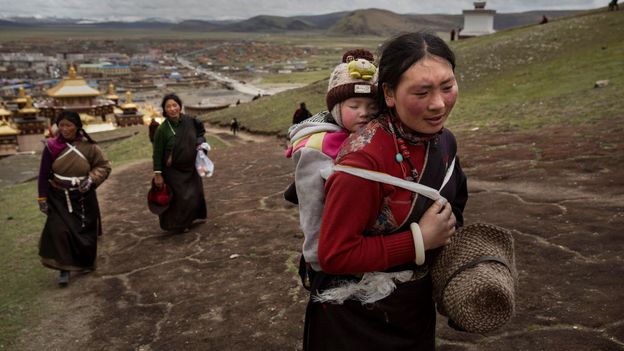Mørch says the Norwegian parenting style cannot be understood without assessing the influence of the psychologist Åse Gruda Skard. Skard was a famous figure in postwar Norway, where she appeared on radio programmes and in newspapers to spread her groundbreaking ideas on “free child-rearing” as a response to the authoritarianism seen before and during the war.
“The US had Benjamin Spock, and we had Skard,” says Mørch. “She strongly opposed a punishment-oriented parenting style, instead teaching parents to look at things from the child’s perspective, to ask: what does the child experience in this situation? What does the child understand now? How can I help the child to understand what’s going on? How can I support the child in this situation?”
As much as I admire the way my friends have raised their children – both of them kind, inquisitive, fun and well-mannered – as a recent new parent, these techniques remain aspirational for the most part, and I can’t imagine adopting many of them myself. I’m all for having a rugged, outdoorsy child who can cook, but I’m not so sure about my future five-year-old returning home to tell me he’d been working on his stick whittling and knife skills at his London nursery – as preschoolers do here in Stavanger.
According to Justine Roberts, the CEO of Mumsnet, I’m not alone in my admiration for the Nordic way of parenting, or my reticence in trying it myself. “Generally, users like the freedom that children have in the Scandi way of doing things, and the fact that it can all contribute to a healthier lifestyle with more outside play. There’s also a feeling that children are more integrated into society,” she says.
“But I think, over the years, UK society has become more risk averse. If you just look at the way attitudes to outside play have changed over the last generation, it’s very clear that parents are more reluctant to take on even the smallest risk.”
Roberts believes British parents became more scared of unsupervised outdoor play sometime in the early 90s, and blames the decade’s breathless media coverage of the threats posed by paedophiles, violent crime and road traffic accidents. “The crime rate is definitely a factor,” she says. “Most mums agree that it just wouldn’t be possible to parent like that here. It’s a shame because giving kids freedom to run around with their friends outside seems to have many advantages – for the children and their parents.”
Talking of what’s possible, there’s a saying in Norwegian: Det finnes ikke dårlig vær, bare dårlige klær (“There’s no such thing as bad weather, just bad clothing”). And it starts in kindergarten, where children are sent with a range of equipment and clothing for anything the climate can throw at them. And know this – they will be outside at some point during the day, whatever the weather.
“When we are outside, we encourage the children to try to get over obstacles, climb rocks and walk on rough terrain,” says Hanne Myhre, who works as a pedagogical leader in a kindergarten in Stavanger, caring for children. “This improves the children’s motor skills, and we find that they become more robust and independent. Sometimes they fall and maybe hurt themselves, but they are comforted by the staff and after a while we can encourage them to try again.” Myhre adds that children are expected to dress themselves (with support, if needed) from the age of two.
For her, the key to the Norwegian model, particularly in Stavanger, is the number of smaller kindergartens and schools located in each neighbourhood, meaning that while children do travel to and from school alone, it is usually a relatively short walk. “Of course, it helps that there is low crime,” she says. “And we trust other people, but we are not naive. As well as all the other lessons, we also teach children not to go anywhere with strangers and we practise safe walking in traffic.”
[COLOR=var(--color-textSecondary)][/COLOR]
She believes instilling these skills helps foster independence, but boosts confidence, too, leading to mature adolescents and steady, grounded adults with a head for decision-making. That was the consensus among everyone I spoke to for this piece, although it is, of course, difficult to know which of the traits someone has in adulthood came from the way they were raised and which came from elsewhere, just as it’s impossible to tell how someone might have turned out if they had been raised in a different way.
For most Norwegians, though, this is a way of life, and not something that is endlessly questioned or even really observed, although there are naysayers.
“This parenting style has been exposed to criticism in the past 10 to 15 years,” says Prof Mørch. “Just as ‘curling parents’ (who sweep away any obstacles for the child), ‘helicopter parents’ (who monitor their child all the time) and ‘cotton parents’ (who pack their child in cotton wool to prevent any accident) have been criticised.”
Critics of free-range parenting, he says, have called for more limit-setting, but he strongly disagrees, arguing that free-range children will learn all they need to about the world without unnecessary intervention. “They do not need parents to organise their problems.”
Link:
.png)
:extract_focal()/https%3A%2F%2Fpocket-syndicated-images.s3.amazonaws.com%2Farticles%2F10720%2F1721942835_GettyImages-492369736.jpg)

Comment